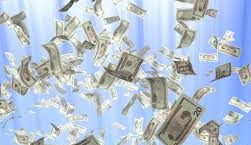The recent pause in interest rate hikes by the Federal Reserve could finally signal an end to monetary policy tightening. But fixed income investors can keep on reaching for high yield opportunities with a pair of active ETFs from American Century.
“Price movements point to an anticipation that the Federal Reserve is done raising interest rates and will now start cutting in early 2024, thereby pushing down market-determined yields as it continues to ease policy throughout the year; and that all this will bode well for the economy and virtually all financial assets,” a Bloomberg report said.
That said, fixed income investors who want yield aren’t left in the cold with opportunities like the American Century Select High Yield (AHYB), which has a 30-day SEC yield of 8.24% as of October 31. The fund’s active management component allows the fund managers to remain pliable in a market environment that can change rapidly, especially with interest rate volatility.
AHYB seeks to provide high current income and strong risk-adjusted returns by emphasizing bonds with the highest ratings within the high yield category (rated BB and B). The fund is highly diversified, with over 560 holdings as of September 30. That reduces risk by minimizing concentration.
An EM Opportunity
One area fixed income investors should consider for more yield is in emerging markets, or more specifically, the American Century Emerging Markets Bond ETF (AEMB). The fund uses active management to deliver high levels of income and attractive risk-adjusted returns over a full market cycle with a low 0.39% expense ratio.
Regarding holdings (over 150 of them), investors will see a mix of debt in corporate, sovereign, and quasi-sovereign. This gives AEMB a dose of diversification while maximizing yield at the same time. As of October 31, the ETF features a 30-day unsubsidized yield of about 8.19%.
With the dollar retreating recently, interest in emerging market assets could be on the rise heading into 2024 especially if the Fed finally decides to loosen monetary policy. In the meantime, EM is still largely a contrarian play so investors should proceed with caution.
“We’ve seen already some pretty sharp gains last week, but the recent gains aren’t extending because there is still uncertainty about the Fed … and at the same time the U.S. is still performing better than most other economies,” said Mitul Kotecha, head of FX & EM Macro Strategy Asia at Barclays, per a Reuters report. “So it’s difficult to see the EM currencies recoup some of the sharp losses that we’ve seen in the last few months. That said, we do expect some gains, it’s just going to be a bit more of a gradual path.”
For more news, information, and analysis, visit the Core Strategies Channel.


